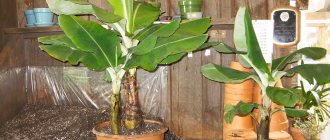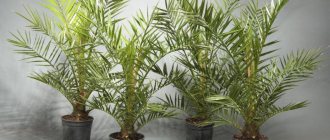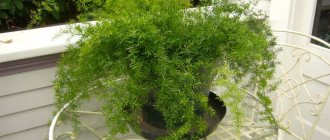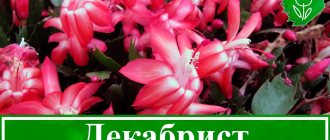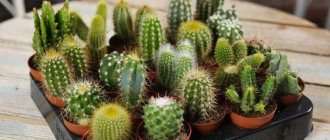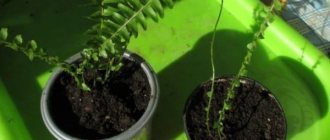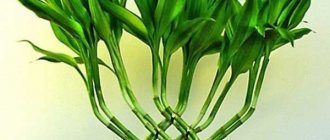Even before the discovery of the American continent, local tribes grew pineapples to produce sweet and sour fruits and strong fiber, which was used to make clothing, mats, fishing nets and baskets.
And today the crop is recognized as one of the most important agricultural countries in the tropical zone. Pineapples grow on vast plantations not only in South and Central America, but also in the Asian region, Australia and a number of African countries. In temperate climates, it is possible to grow pineapples in greenhouses. And on home windowsills and in gardens this crop is used as a spectacular ornamental plant.
What does a pineapple look like and where does it grow?
Pineapple is a herbaceous perennial belonging to the Bromeliad family. Unlike most of its “relatives”, it is not an epiphytic plant.
Europe has been familiar with it for more than five hundred years. The fruit was brought home by Christopher Columbus after his first voyage across the Atlantic at the end of the 15th century. The crews of his ships, having tasted the juicy pulp, did not hide their admiration, calling the fruit the most delicious on earth. Very quickly, the exotic fruit fell in love with the European aristocracy and royalty.
Europeans first became acquainted with the pineapple when the crews of Christopher Columbus' ships landed on the island of Guadeloupe.
The common modern name pineapple is due to the unusual shape of the fruit, which resembles something between a pine cone and an apple. Columbus gave it the name pina de Indes, mistakenly believing that he had finally reached the shores of India. And the word “pineapple” is borrowed from the Tupi Indian language and is translated as “magnificent fruit.”
Quite quickly, attempts began to adapt the plant to new conditions. Pineapples were brought to Asia and Africa, a significant part of whose territory at that time was occupied by the colonies of European metropolises. The local tropical climate suited the South American plant perfectly. A little later (in 1653), attempts to cultivate pineapples directly in Europe were crowned with success, although not in open ground, but in greenhouses, hothouses, and winter gardens. At the end of the 18th and beginning of the 19th centuries, this became a very fashionable activity. Fruits are often found in portraits of the time.
In Russia, the first pineapples appeared under Catherine II. The Empress regularly feasted on fruit from her own greenhouses. But those close to her initially reacted to them with even greater distrust than they once did to the potatoes brought by Peter I. They tried to ferment the fruits like cabbage and add them to cabbage soup and borscht. Then used as a side dish for meat dishes.
In nature, most varieties of pineapple can be found on the arid Brazilian plateaus. Its homeland is considered to be the Mato Grosso plateau, located almost on the border with Paraguay. Today, the crop is grown on an industrial scale almost everywhere, if climatic conditions allow it.
Pineapples are grown on an industrial scale in many countries in Central and South America, Southeast Asia, and Africa.
Leading exporters include Thailand, the Philippines, Taiwan, USA (Hawaii), Australia, China, India, Mexico, Costa Rica, Cuba, Ivory Coast, Ghana, Nigeria, and the Republic of Congo. And for the first time, the cultivation of pineapples for export was successfully organized in the Azores. At the moment, this fruit is the second most consumed fruit among all fruits in the world. Over the past 70 years, the area of plantations has increased more than fivefold. This was largely facilitated by the work of breeders, who managed to develop varieties that were large-fruited and much sweeter than their natural counterparts. 90% of all fruits are imported from France, Italy, Spain, Germany, Belgium, the Netherlands, Great Britain, South Korea, Japan and Singapore.
Pineapples are an important component of global fruit exports
Video: pineapples on a plantation
The plant looks quite unusual - it is a rosette of hard, prickly leaves (about 30 pieces), curved like a crescent or a saber. They are located very closely and are almost completely covered with a thick layer of bluish-gray “waxy” coating. The height of the rosette varies from 60 cm to 100 cm.
Many people still seriously believe that pineapples grow on palm trees.
The leaves are very large and fleshy. The plant stores moisture and nutrients in them, creating a kind of “emergency reserve” that helps to survive the dry season. The average leaf length is 30–100 cm, in some varieties it is 2 m or more. Fabrics contain fibers that give them density and elasticity. South American aborigines have been using them for making ropes for a long time. In the axils of the leaves there are multiple adventitious roots that absorb moisture from the air.
The root system of pineapple is superficial. The roots go deep to a maximum of 25–30 cm. And it cannot be called branched either - the diameter of the “trunk circle” is no more than 50 cm.
The pineapple itself is actually a lot of small fruits fused together. When the rosette reaches its maximum dimensions (depending on the variety, this takes 11–18 months), a powerful peduncle 50–60 cm high is formed in the center. At its top, bright lilac or crimson flowers are very densely arranged, forming a spiral (in strict accordance with sequence of Fibonacci numbers). They open one by one, about 10 pieces daily. Each top is covered with a bract of a dull red or greenish hue. The entire flowering period lasts 20–25 days.
Pineapple flowers are painted in different shades of pink and lilac.
Each flower then produces a miniature fruit. As they grow together, they turn into something that looks like a very large cone of yellowish-brown color with individual golden-green splashes. Inside the pineapple there is a rigid “axis”, on the tops of the fruit there are “spines” (remnants of keratinized bracts). This entire “structure” is decorated with a “crown” or “panicle” of short (compared to those in the rosette) leaves. The average weight of a mature fruit is about 2–3.5 kg; individual specimens gain a weight of 12–15 kg. The entire process takes 3–6 months.
Pineapple flowers on the peduncle open alternately, from bottom to top.
When the fruit is cut, the plant forms several side shoots instead of one central one. They can be used for reproduction. With this method, all varietal characteristics are preserved. After removing the shoots, in most cases the pineapple blooms and bears fruit again. The plant is then uprooted and replaced with a new one.
The flesh of ripe pineapples is pale yellow. It is very juicy, has a bright, memorable taste and a pronounced characteristic aroma. About 2/3 of the pineapple fruit is edible, the rest is the skin, the central axis and the rosette of leaves at the top. Unripe fruits have very caustic juice, causing burns to the oral mucosa and causing indigestion.
The pineapple pulp is very juicy and aromatic, with a characteristic pleasant taste.
In nature, pineapple flowers are often pollinated by hummingbirds. Then seeds are formed in the pulp of this fruit. But this negatively affects the quality of fruits grown for sale. Therefore, on plantations they try to avoid pollination by all possible means. The most common method is to cover the inflorescence with a cap.
Pineapple fruits are not only very tasty, but also extremely healthy. In addition to containing high concentrations of ascorbic acid, one can note the presence of vitamins B, A, and PP. Among microelements, pineapples are rich in potassium, magnesium, zinc, copper, phosphorus, calcium, manganese and iodine.
There is hardly anyone who doesn't like pineapple for dessert.
The pulp contains bromelain. This is a complex of enzymes that helps the body quickly break down proteins, fats and carbohydrates. Thanks to them, food is digested faster and better. It has been scientifically proven that bromelain helps in the fight against excess weight. It also has a positive effect on the immune system and has antibacterial and anti-inflammatory properties. Pineapple pulp is low in calories (only 52 kcal per 100 g), but quickly creates a feeling of fullness due to its high fiber content.
Freshly squeezed pineapple juice helps digest heavy foods faster
Regular inclusion of fruits in the diet helps thin the blood and helps cleanse the walls of blood vessels from cholesterol “plaques”. This is an effective prevention of heart attacks, strokes, thrombosis, hypertension, and varicose veins.
Pineapple juice is recommended for those who suffer from seasickness. It also helps cope with nausea during air travel.
Pineapple is widely in demand not only by nutritionists, but also by cosmetologists - it makes excellent masks, especially for oily skin
Pineapple is a strong allergen. Knowing that you have a tendency to such reactions, you should try it for the first time very carefully. There are other contraindications to its use, mainly associated with a high acid content - diseases of the gastrointestinal tract (ulcers, gastritis, colitis), especially in the acute stage, low blood clotting, increased sensitivity of tooth enamel, stomatitis and other problems with the mucous cavity mouth It is not recommended to include fruits in the diet of children under three years of age and women during the entire period of pregnancy and lactation. There is anecdotal evidence that unripe and overripe fruits can even cause miscarriage.
Video: health benefits of pineapples
Beneficial features
The fruit of the exotic plant is rich in many vitamins and useful elements, among which are B1, B2, B12, PP, A, iron, phosphorus and calcium.
Perfect for those who watch their figure and lead a healthy lifestyle, as it contains a small amount of organic acids and fats, being a low-calorie product.
Pineapples are recommended to be consumed for preventive purposes in case of cardiovascular diseases, to stabilize blood pressure (with the exception of hypotension), thin the blood, cleanse blood vessels, improve the functioning of the digestive tract (do not use if you have stomach diseases), for cosmetic purposes and for weight loss.
Unripe fruits should be consumed with caution due to their high acidity. The leaves contain fibers of a rigid structure that are used for spinning.
Common varieties
Purposeful selection of pineapples has been carried out since the 18th century. Now in Hawaii there is even a special institute for the study of this crop, which has given the world many very popular varieties, the first of which was Del Monte. Most often, individual varieties are combined into classes. The “ancestor” of the vast majority of varieties is the large-tufted pineapple (comosus).
Large-tufted pineapple is the basis for the vast majority of breeders’ experiments
Smooth Cayenne
The class that includes the most varieties. Pineapples of these varieties are most often grown in Hawaii, Mexico, Honduras and the Caribbean. Some varieties are cultivated in the Philippines.
The plants are easily identified by their very short stalk. The leaves are almost smooth, there are few spines. The egg-shaped pineapples themselves weigh 1.5–3 kg. The skin from the base to the top gradually changes color from greenish to yellowish-brown. Ripening occurs gradually; a ripe fruit is recognized by its yellowed crown. The pulp is pale yellow and contains a high concentration of both sugar and acid, which gives the taste a piquant pungency. Pineapples of this group of varieties are most often used for canning. Disadvantages include the length of the fruit ripening period and relatively low immunity against diseases and pests typical of the crop.
The most popular varieties from that group:
- Kew. Grown exclusively on plantations. The leaf length is 1.5 m or more, the rosette diameter is about 2 m. The weight of the fruit varies from 4 kg to 10 kg.
- Champaca. Very small fruits weighing no more than 0.5 kg. The inedible axis is almost absent in the pulp. The diameter of the rosette is no more than 30 cm. The variety is suitable for cultivation at home.
- Amritha. The fruits are in the shape of an almost regular cylinder, slightly tapering at the base. Pineapple weight is 1.5–2 kg. There are few leaves on the top of the fruit. The skin is 5–6 mm thick, almost smooth, without depressions between the “eyes”. These pineapples are easy to clean. The pulp is very dense, almost crispy, not fibrous. The acid content is low. Characterized by a very rich aroma.
- MD-2. The variety is officially recognized as a reference variety for cultivation on an industrial scale. These pineapples account for almost 50% of world exports. The fruits are valued for their external presentation, high sugar content and low acid content. The average fruit weight is 1.5–2 kg. The shelf life of ripe pineapples is long - about a month (versus the usual 15-20 days). The only drawback is susceptibility to late blight and all types of rot.
Also included in this class are the varieties Baron de Rothschild, G-25, Dominguo, Gaimpew, Maipure, Sarawak, La Esmeralda, Hilo.
Photo gallery: pineapples from the Smooth Cayenne variety group
Pineapple Qew stands out with rosette dimensions
Pineapple Champaca - an excellent portioned dessert
Amritha pineapple is very aromatic, with a subtle acidity
Pineapple MD-2 is a variety that has officially been assigned the status of reference
Spanish
Cultivated mainly in Central and Latin America. Especially popular in Puerto Rico. They are easily identified by their crimson-pink bracts. There are no or very few spines on the leaves. The average fruit weight is 1–2 kg. The pulp is the color of butter or almost white, somewhat harsh, with pronounced fibers and a very light aroma. In cross section the fruit is almost square. Most varieties from this group belong to the table category, not dessert. They have very good shelf life and transportability. The most popular of them:
- Pina blanca.
- Red Spanish.
- Cabezona.
- Canning.
- Valera Amarilla Roja.
In some pineapples from the group of Spanish varieties, the characteristic bright shade of the bracts remains even when the fruits ripen - the skin is slightly reddish-pink
Queen
Pineapples in this class are identified by their compact rosette of pale green leaves and greenish skin. The leaf blades are short and spiny. The average weight of the fruit, as a rule, does not exceed 1.5 kg. The shape resembles a ball. The pulp is very aromatic, golden yellow or saffron in color. This rich shade is due to the increased content of beta-carotene and lycopene. These varieties are cultivated mainly in Africa. Their taste is not as pronounced as that of American pineapples, but the acid content is lower.
The most common varieties:
- Natal Queen.
- Macgregor.
- Z-Queen.
- Cannara.
Queen pineapples are easily identified by their characteristic fruit shape.
Abacaxi
It cannot be said that these varieties are cultivated en masse. They are mainly grown in Mexico and Venezuela. A characteristic feature is almost white, very tender and juicy pulp. The average weight of the fetus is 1–2.7 kg.
The group includes varieties:
- Kona Sugarloaf.
- Black Jamaica.
- Montoufar.
Pineapples of the Abacaxi class are distinguished by their very light flesh.
Baby (or Nana)
Mini pineapples, the height of the fruit is no more than 10–15 cm, the diameter is 8–10 cm. The diameter of the rosette does not exceed 30 cm. The taste is excellent. The pulp is very juicy, sweet and aromatic, absolutely without fiber. Often cultivated at home. They produce a stable harvest.
Miniature pineapples are in no way inferior to large fruits in taste.
Appearance
Externally, the pineapple is a small thorny bush. Large strong leaves are collected in a rosette. The root system is underdeveloped.
A flower shoot forms in the center of the plant, resulting in flowers and subsequently fruits, which are united into a single fruit. Its surface is covered with scales and looks like a cone; the leaves are located at the top of the fruit.
Suitable conditions for growing pineapple
The Russian climate is radically different from what is typical for the tropics native to pineapple. Therefore, it is impossible to grow fruits in open ground in our country. However, amateur gardeners successfully cultivate pineapples at home, regularly receiving a harvest. The plant does not have a clearly defined dormant period, so it does not need a radical change in conditions during the year.
Fruiting pineapple at home is no longer something supernatural
It is immediately worth noting that the culture is very demanding and capricious in care. If you do not create optimal or close to optimal conditions for the plants, you can’t count on fruiting. The most important things for pineapple are the correct air temperature, humidity and sufficient lighting.
At home, a pineapple will grow and bear fruit only in suitable conditions.
Plants require at least six hours of natural light per day, regardless of the time of year. The minimum duration of daylight when using fluorescent, LED, and phytolamps is 8–10 hours. Place light sources about 20 cm above the pot, at a slight angle. In most of the territory of Russia it is impossible to do without additional lighting, especially in winter. In the summer, the plant can be placed on a balcony, open veranda, terrace, protected from direct sunlight, raindrops and cold drafts.
Phytolamps help provide the pineapple with the required length of daylight at any time of the year.
There is no need to turn the pot, the socket does not tend to “skew”, one-sided lighting is enough for it. The fact that the plant does not suffer from light deficiency is evidenced by the presence of a bluish coating on old leaves and dull red tips of young leaf blades.
Against fresh air, if it's warm enough outside, pineapple has nothing
Since pineapple comes from the tropics, it is easy to guess that it is a heat-loving plant that absolutely does not tolerate cold. He needs to ensure the complete absence of drafts and maintain the soil temperature at 18–21ºС. At the same time, it is not recommended to place pots near a radiator or other heating devices - they dry out the air greatly. The most suitable temperature for the plant in summer is 27–30ºС; in winter it should not fall below 18ºС.
Pineapple, like all Bromeliads, has a very positive attitude towards high air humidity. The leaves should be regularly wiped with a wet cloth, and the surrounding air should be sprayed several times a day. At the same time, be sure to ensure that the drops do not fall into the axils of the leaves - this can provoke the development of rot. In extreme heat, you can put wet pebbles, expanded clay, sphagnum moss or coconut fiber in the tray of the pot. There are other ways to increase air humidity - use a special device, place bowls of cool water around the room, create a “company” for the pineapple from other plants.
It is recommended to spray pineapples regularly, especially in hot weather.
Video: how to create optimal conditions for a pineapple at home
general information
In nature, pineapple grows as a shrub. It has a height of up to one and a half meters and prefers a tropical climate. The cob is located at the top of the stem and is often fused with other cobs. The fruit itself is an infructescence formed by an axis, fused fruits extending from it, and a bunch of leaves.
In nature it reproduces by seeds and shoots. Vegetative propagation is typical for crops grown under artificial conditions.
The largest plantations are located in equatorial countries: Brazil (considered the birthplace of pineapple), Thailand, Guinea. Fruit export plays a significant role in the economy of such countries.
In Russia, it can only be grown in greenhouses; this is practiced in Crimea and the Krasnodar Territory. Where pineapple is grown, the soil is prepared and special conditions are maintained. For normal growth, a constant temperature above 25 C must be required.
Landing procedure and preparation for it
Pineapples can be grown at home either from seeds or vegetatively from the “crown” of leaves at the top of the fruit. The first method is practiced extremely rarely - obtaining planting material is quite problematic, the procedure is complex and time-consuming, and the preservation of varietal characteristics is not guaranteed.
Growing pineapple from a rosette of leaves at home is most often practiced
In the second case, you first need to purchase a suitable fruit. A healthy, ripe pineapple is characterized by a light, unobtrusive aroma. Its skin is uniform, golden brown, slightly springy, but does not collapse when pressed. The leaves at the top are fresh, with dried tips. It is imperative that there are no grayish spots on them and on the fruits - this is evidence of damage by scale insects or the development of mold and rot.
The easiest way to grow a pineapple at home is from the top, but you need to choose the right fruit
It is not difficult to separate the “sultan” from the leaves. They grab it with their hand and carefully turn it, as if opening a bottle. Or you can simply cut off the top with a knife and then carefully scrape out all the pulp.
It is better to trim the lower leaves so that they do not start to rot in the water.
Having received the planting material, several lower leaves are cut off, exposing 3–4 cm of the base, and the rosette is left for 3–5 days to dry, hanging with the cut side up. “Wounds” are sprinkled with crushed activated carbon, chalk, cinnamon or treated with brilliant green and iodine. Otherwise, rot is very likely to develop. After this time, it is placed in a container with soft water at room temperature. The water should completely cover the exposed base of the socket. You can add a couple of drops of any biostimulant to it. Both store-bought preparations (Zircon, Epin, Kornevin) and folk remedies (aloe juice, honey diluted with water, baking soda solution) are suitable.
Any mechanical damage is a “gateway” for infections, so “wounds” must be allowed to heal
The container is placed on the windowsill of a window facing south, southeast, southwest. The plant definitely needs light, but direct sunlight is undesirable. The water is changed every two days and its level is constantly monitored. The first roots appear after 25–30 days. To speed up the process, the container is wrapped in black plastic film and thick dark paper. As soon as they reach a length of 3–4 cm, the rosette can be planted in the ground.
The water in the container with the pineapple outlet needs to be changed regularly
Pineapple does not need a large volumetric pot at all. The root system of the plant is superficial and underdeveloped. She is simply not able to master such a vast space. In addition, the active development of the root system does not leave the pineapple the strength to form flower stalks and fruits. A container resembling a bowl or salad bowl is best suited, always with one or more drainage holes. A layer of expanded clay, pebbles, and brick chips about 3 cm thick is poured onto the bottom.
For planting pineapples, choose a shallow but wide pot
Pineapple needs nutritious soil, but at the same time loose. In specialized stores you can find soil for Bromeliads, it is quite suitable. Although some gardeners prefer to mix the substrate themselves. Sand and peat chips are added to fertile turf or humus in a ratio of 3:2:1. It is recommended to add crushed chalk or activated carbon (3–5% volume) to the finished mixture to prevent the development of fungal diseases. The soil must be acidic (pH 4.5–5.0).
The soil for pineapple must be acidic, no matter whether it is purchased or prepared independently.
Any soil must be sterilized before use. It is frozen, steamed, fried in the oven or microwave. The quickest way is to soak the soil with boiling water or a deep purple solution of potassium permanganate. The pot also needs to be disinfected.
About two hours before planting, the soil is spilled with hot (45–50ºС) water. The rosette is planted, deepening it by 5–6 cm. Then the plant is watered moderately and the container is placed in a warm, bright place. Pineapple takes root within 2–3 months. The optimal temperature is 22–26ºС, bottom heating is desirable. The appearance of new leaves indicates that the procedure was successful. To speed up the process, you can cover the pot with a transparent plastic bag, cut-off plastic bottle or glass cap for the first 15–20 days, creating a “greenhouse”. Leaves should not touch it. But the cover will need to be removed for a few minutes every day. Condensation accumulating underneath provokes the development of rot.
About a year after the rosette takes root, it is advisable to replant it, increasing the diameter of the container by 3–5 cm. For most mature plants, a 3-4 liter pot is sufficient. The same soil is used. The lower leaves will gradually brown and die. They are pruned before transplanting.
Video: growing pineapple from the top
Choosing a quality fruit
Many people don't know how to choose the right pineapple. When purchasing a pineapple, it is important to choose a ripe fruit so that it is tasty and fresh, and most importantly, beneficial. The scales should be yellow or brownish. If they are green, the fruit is not yet ripe and cannot be eaten - it has few beneficial properties for the body; on the contrary, it can cause harm. Another difference between a ripe pineapple is the pleasant smell at the base and leaves. If the leaf crown is easily pulled out, the fruit is good. A green pineapple will no longer ripen, since when the fruit is cut from the bush, its development stops. It has few beneficial properties for the body; on the contrary, it can cause harm.
Caring for crops at home
Caring for a pineapple is not difficult if you first become familiar with the “wishes” of the plant. Even a novice gardener can get a harvest.
The plant loves moisture, but categorically does not tolerate stagnation of water at the roots. It is adapted to drought much better than to waterlogged soil. A “swamp” in a pot is the most reliable way to quickly ruin a rosette.
If you water your pineapple too often and/or too much, the development of rot is almost inevitable.
Water the pineapple about once a week, but generously. In hot weather, the interval between procedures is reduced to 3–4 days, but the norm is reduced by approximately half. You constantly need to monitor the condition of the soil in the pot - the appearance of mold, an unpleasant putrid or “swampy” smell indicates that rot has begun to develop. You can save the plant only by immediately transplanting it into a new container and completely changing the soil.
Pineapples, unlike other Bromeliads, are watered only in hot weather.
The optimal method of watering for any Bromeliads is to pour water into an outlet. But pineapple, unlike most of its “relatives,” receives most of its moisture and nutrients from the soil. Therefore, it is recommended to resort to this method only in extreme heat. The rest of the time, regular watering is practiced along the edge of the pot. The water must be soft and heated to room temperature in summer and up to 35ºC in winter. The best option is melt or rain water, but you can also use regular tap water. Add apple cider vinegar or citric acid to it (2-3 drops or granules per 10 liters). This helps acidify the substrate. The plant feels best in such soil.
Apple cider vinegar helps slightly acidify the soil without harming the plant.
In winter, if the air temperature drops to 20ºC, the water in the outlet is drained. And when it drops to 15ºС, watering is stopped completely.
Fertilizers are applied twice a month. Slaked lime, dolomite flour and wood ash, and other alkaline fertilizers are strictly excluded. Pineapple reacts very well to natural organic matter, especially fresh cow manure. An infusion is prepared from it. The container is filled with raw materials by about a third, topped up with warm water, tightly closed with a lid and left in the sun. After 3-4 days, a characteristic smell will appear, indicating that the fertilizing is ready. Before use, it is carefully filtered and diluted with water in a ratio of 1:10. You can also use nettle leaves, dandelion leaves and, in general, any weeds from the garden as raw materials.
Nettle infusion is a natural source of nitrogen, potassium and phosphorus
It is useful to alternate organic fertilizers with store-bought complex preparations for Bromeliads or azaleas. But in this case, the concentration of the product is reduced by half compared to the dose recommended by the manufacturer.
Fertilizer for azaleas is also suitable for pineapples - both plants prefer acidic soil
Once a month, to prevent the development of chlorosis, it is recommended to spray pineapples with a 0.01% solution of copper sulfate.
Video: tips for caring for pineapple
With proper care and in optimal conditions, pineapple rarely, even almost never, suffers from diseases and pests. The greatest danger for it is rot, the development of which is most often the fault of the gardener himself, who is too zealous with watering. The only way to save a plant (and then only at an early stage of disease development) is by immediate replanting with a complete replacement of the soil. When a pineapple is removed from a pot, all leaves on which even the slightest characteristic damage is visible are cut off, including some seemingly healthy tissue. The roots are soaked for several hours in a bright crimson solution of potassium permanganate or any fungicide of biological origin (Strobi, Alirin-B, Fitosporin-M). Trichodermin and Glyocladin granules are added to the soil during transplantation.
Pests, as a rule, have little interest in the pineapple itself, but they can move on to it from other already infected plants on the windowsill. Its leaves are very tough, they are too tough for most pests that feed on plant juices. But there are exceptions - mealybugs and spider mites.
Infection of a plant with a mealybug is easily recognized by a whitish, cotton-like coating on the leaves.
Both of them really do not like high air humidity, so it is recommended to spray pineapples regularly. For prevention, the rosette and soil in the pot are treated with an infusion of onion or garlic pulp once every 2–3 weeks. Having discovered the first pests, the leaves are sprayed with foam of green potassium, laundry or tar soap, and after an hour the plant is given a shower. To combat mealybugs, any general-action insecticides (Inta-Vir, Aktara, Mospilan, Tanrek) are suitable; for spider mites, only special preparations - acaricides (Neoron, Sunmite, Apollo, Vertimek).
Spider mites are not insects, so special preparations are used to combat them.
Useful tips on how to grow pineapple at home
To grow pineapple at home, it would be a good idea to learn a few tricks from those who have already gone through the entire process of growing this tropical fruit.
Experienced flower growers recommend:
- The next time you transplant the pineapple into a larger pot, cover it with a cap for several days. This will speed up the plant’s adaptation to the new container.
- Rare but abundant watering is best for pineapple. The water that accumulates in the rosette becomes a stimulus for the formation of new roots.
- Due to the peculiarity of the pineapple root system, it is better to choose a shallow and wide pot for it.
- If in the summer a pot of pineapple is kept in the garden, then when it rains it must be brought into the greenhouse. By the end of summer, the temperature drops and the plant must be returned to the house. The best time for this is mid-August.
- You should not separate young shoots that appeared after flowering ahead of time. It is necessary to wait until they have roots of their own - only in this case are the shoots ready to separate.
- Pineapple is a light-loving plant, but direct sunlight can harm it. It is not recommended to keep a pot of pineapple on a south-facing windowsill without shading in the summer.
- You should not try to root the “xoxolok” of pineapple purchased during the winter months. This is practically useless, since during this period fruits in stores are stored at low temperatures and the fruit may freeze.
- Direct sunlight, drafts and sudden changes in temperature are what the pineapple rosette should be protected from during its rooting.
- It is recommended to hem the cut of the top in a vertical position. This way the wound will dry out faster, and all nutrients will be concentrated in the desired segment.
- Summer is the best time to stimulate flowering. During this period, the chances for success are much greater.
Pineapple is the most popular exotic plant. For those who like to take care of plants, it will be very interesting to grow this fruit at home and get a tasty and aromatic fruit. Instructions on how to grow a pineapple at home from the top were given step by step in our material.
